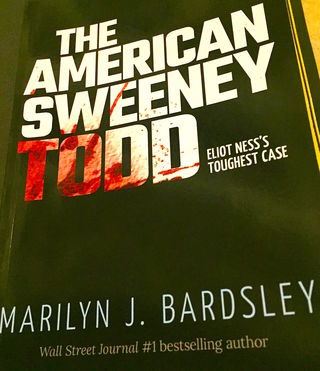Psychology Today
The G-Man and the Serial Killer

In September 1934, part of woman’s torso, with legs severed at the knees, washed up on the shore of Lake Erie in Cleveland, Ohio. Never identified, she became known as the Lady of the Lake. A year later in the slums of Kingsbury Run, two headless, mutilated male corpses were found with genitals removed. In 1936, the remains of a prostitute turned up in a basket behind a butcher shop just before another male was decapitated and dumped. The killer acquired a moniker, “The Mad Butcher of Kingsbury Run.”
Cleveland’s Director of Safety was the famed Eliot Ness, former G-Man and founder of “the Untouchables.” Stymied over his inability to nab the local serial offender, he ran raids and ordered a slum to be burned. This served no purpose. There were more bodies. After analysis with a team of professionals, Ness narrowed his focus to a surprisingly educated suspect, a mentally unbalanced alcoholic from a prominent family. Ness was playing a risky game.
So was writer Marilyn Bardsley, who heard spooky tales about these incidents as a child living in Cleveland and who doggedly pursued it as an adult to learn the secret that Ness had kept for almost forty years: the suspect’s identity. She thought about writing a play. This got her a phone call from a psychiatrist who claimed to have witnessed the meetings between Ness and the suspect. He said that if she discovered the man’s identity, he would tell her more.
Now she had a challenge! As she made headway, her only manuscript was stolen. (No storage drives back then.) She carried on and discovered she was being followed. When she was warned off the story, she gained some clues. More people popped up who had something to say. This clearly was a dangerous secret! But she figured it out. Bardsley meant to collect what she had gathered into a nonfiction book, but this didn’t happen. Now she has written it as a novel. Thus, it feels more alive.

The American Sweeney Todd is a fictionalized account, based on actual documents and interviews, narrated via the killer’s journals. Since Bardsley has written extensively about many different serial killers, her background provides authentic dimension.
It’s not easy to put yourself in this nasty man’s mind as he describes what he does to people and why, but some of his ramblings remind me of my own 5-year project with Dennis Rader, the BTK serial killer from Wichita, Kansas. Rader had appreciated Jack the Ripper because he never got caught, inspiring endless fascination to this day. So does this guy. When Rader went unidentified for thirty years, he formed a plan to inform people after his death that he was the infamous BTK killer. So does this guy.
Like Rader, the Mad Butcher scans the newspaper for mention of his “work.” He hates being ignored. Reacting to one article, he says, “Not only have I made the front page again, but I have taken it over. At last, I am somebody in this city.” Rader, too, loved terrorizing his hometown. He complained about his lack of media attention.
However, BTK named himself to ensure that no one picked a moniker he disliked; the Mad Butcher didn’t realize this could happen. He was no butcher at all, but a trained surgeon. Still, the butcher notions kept attention off him. At first.
So, readers are taken through each of a dozen murders from the killer’s perspective, as he gives his various justifications. He’s believable, with his personal demons, his life distractions, his awareness of the investigation, his elitism, and his functional psychopathic lunacy. It’s all based on interviews with former detectives, associates of Ness, and people who once knew the deranged doc.
Just as interesting is Bardsley’s account at the end this book of her pursuit of “Eliot Ness’s toughest case.” I’ve known her since my days of writing for Court TV’s Crime Library, which she founded and managed. We’ve had a few adventures together. She doesn’t scare easy, so those people who warned her off the story didn’t know who they were dealing with. To her credit, the warnings only alerted her to the importance of getting this story right and putting it out here for the rest of us. I’ve heard her tell it before, so I’m glad she has finally found a format for it.
Ness kept his suspect imprisoned in a hotel, taking polygraphs and being forced into a deal that would benefit all and avoid embarrassing certain officials. For me, this encounter is the best part. In 1938, the doctor agreed to Ness’s ultimatum, disappeared from the public eye, and the murders stopped.
Whether the Mad Butcher had also killed people in Pennsylvania is the subject of another book, written by a Bardsley’s colleague, James Badal. I reviewed Hell’s Wasteland here. Both books are worth a read, especially together. The creepiness factor is prominent, but so is the painstaking work to take readers back to a past time when a vicious serial killer in town was truly terrifying. For both of these reasons, this novel is a page-turner.
References
Bardsley, M. (2017). The American Sweeney Todd. Crimescape.
